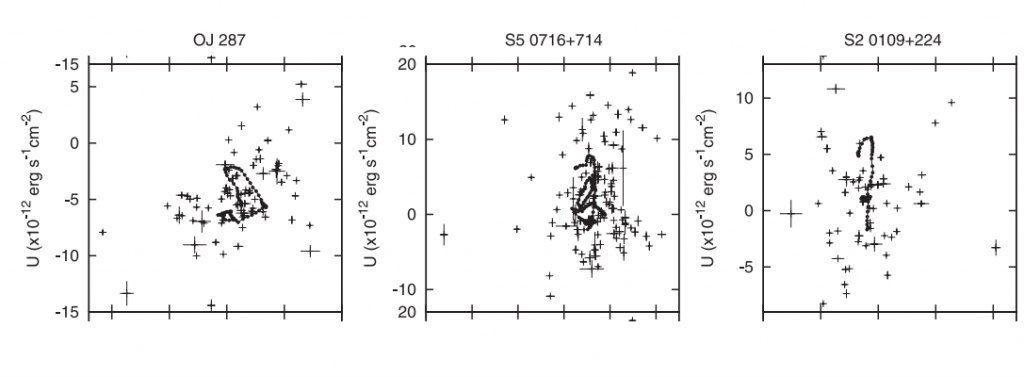Bayesian Approach to Find a Long-Term Trend in Erratic Polarization Variations Observed in Blazars

M. Uemura, K. ~S. Kawabata, M. Sasada, Y. Ikejiri, K. Sakimoto, et al., “Bayesian Approach to Find a Long-Term Trend in Erratic Polarization Variations Observed in Blazars,” PASJ, vol. 62, p. 69-, 2010.
We developed a method of separating a long-term trend from observed temporal variations of polarization in blazars using a Bayesian approach. The temporal variation of the polarization vector is apparently erratic in most blazars, while several objects have occasionally exhibited systematic variations, for example an increase of the polarization degree associated with a flare of the total flux. We assume that the observed polarization vector is a superposition of two distinct components: a long-term trend and a short-term variation component responsible for short flares. Our Bayesian model estimates a long-term trend that satisfies the condition that the total flux correlates with the polarized flux of the short-term component. We demonstrate that assumed long-term polarization components are successfully separated by the Bayesian model for artificial data. We applied this method to the three photopolarimetric data of OJ 287, S5 0716+714, and S2 0109+224. Simple and systematic long-term trends were obtained in OJ 287 and S2 0109+224, while no such trend was confirmed in S5 0716+714. We propose that the apparently erratic variations of polarization in OJ 287 and S2 0109+224 are due to the presence of the long-term polarization component. The behavior of polarization in S5 0716+714 during the period of observation implies the presence of a number of polarization components showing variations on a quite short time-scale.
